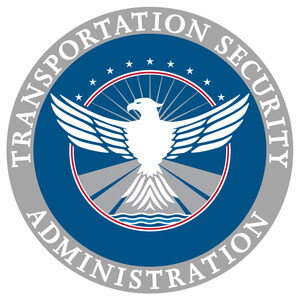TSA is prepared for a busy spring break travel season, expects travel volumes at nearly 6% above 2023
Shares tips for a smooth travel experience
WASHINGTON, March 5, 2024 /PRNewswire/ -- As spring break travelers prepare for their vacation getaways, the Transportation Security Administration (TSA) is up for the challenge and is offering practical tips to help them plan for a smooth journey as they go through the security checkpoint and take to the skies. The busy peak spring break travel season begins around March 7 and continues through March 25.
"TSA screened a record number of passengers in 2023, and we expect that trend to continue this year," said TSA Administrator David Pekoske. "So far in 2024, travel volumes are trending at nearly 6% above the same period in 2023. We always work closely with our airline and airport partners to plan for and meet the increasing travel demand while doing our best to maintain our wait times of 30 minutes or less in standard lanes and 10 minutes or less in TSA PreCheck® lanes."
TSA knows travelers put a lot of time and effort into planning the perfect spring break getaway, so we are providing the following tips and tricks to help make sure your special trip gets off to a great start:
Pack smart and remember the 3-1-1 rule. Make sure to start with an empty bag to avoid packing any prohibited items. If you're heading to the beach, you may wonder how to pack your sunscreen. Any liquids, sunscreen containers and alcohol over 3.4 ounces must be packed in a checked bag. Liquids, aerosols, gels, creams and pastes are allowed in carry-on bags as long as each item is 3.4 ounces or less and placed in one quart-sized bag. Each passenger is limited to one quart-size bag of liquids, aerosols, gels, creams and pastes.
Unloaded firearms must be packed in a locked, hard-sided case in checked baggage only and must be declared to the airline. Travelers who bring firearms or other weapons to the security checkpoint face consequences. To avoid delays, passengers should search TSA's "What Can I Bring?" webpage.
Be checkpoint ready and bring a valid ID. Arrive at the checkpoint with a mobile or printed boarding pass and readily available valid ID. Listen closely to and follow instructions from TSA officers for guidance through the screening process. At many checkpoints, you may be asked to insert your physical ID into one of our Credential Authentication Technology (CAT) units, where a boarding pass is not needed. Nearly 30 airports have a second generation of CAT, called CAT-2, which adds a camera with optional facial recognition technology and smartphone reader. This technology better detects fraudulent IDs. Passengers who do not want their photos taken may ask the TSA officer for a manual ID check without losing their place in line. For more information on how TSA is using facial recognition technology, see our TSA Facial Recognition Technology Fact Sheet. Starting May 7, 2025, every air traveler 18 years of age and older must have a REAL ID-compliant driver's license or another acceptable form of ID to fly within the United States. 2024 is a good time to get your REAL ID. Contact your state DMV for more information.
Enroll in TSA PreCheck®. Enjoy the benefits of faster checkpoint screening with a TSA PreCheck membership. Traveling with kids? Teenagers aged 17 and under may accompany TSA PreCheck-enrolled parents or guardians through TSA PreCheck screening lanes when traveling on the same reservation and when the TSA PreCheck indicator appears on the teen's boarding pass. Children 12 and under may still accompany an enrolled parent or guardian through the TSA PreCheck lanes any time, without restriction. Most new enrollees receive a Known Traveler Number (KTN) within five days, and membership lasts for five years. TSA PreCheck starts at $78 for a five-year membership. That's about $15.60 per year. Online renewals are $70. Don't delay. Enroll in TSA PreCheck today.
Arrive early and please be patient. Spring break travelers should give themselves plenty of time to account for traffic, parking, rental car returns, airline check-in, security screening and making any airport purchases before boarding a flight. The airport environment can be stressful. Remain patient, and remember everyone around you is also on their own journey. Passengers who engage in unruly behavior at the checkpoint, the gate area or inflight may face substantial penalties and possible prosecution on criminal charges.
Call ahead to request passenger support. Travelers or families of passengers with disabilities and/or medical conditions may call the TSA Cares helpline toll-free at 855-787-2227 with any questions about screening procedures and to find out what to expect at the security checkpoint. If you call at least 72 hours prior to travel, TSA Cares also arranges assistance at the checkpoint for travelers with specific needs. For more information, visit the TSA Cares website.
Ask TSA before you travel. Contact TSA over social media by sending a message to @AskTSA on X or Facebook Messenger. Passengers may also send a text directly to 275-872 ("AskTSA") on any mobile device. An automated virtual assistant is available 24/7 to answer commonly asked questions, and AskTSA staff are available 365 days a year from 8 a.m. to 6 p.m. ET for more complicated questions. Travelers may also reach the TSA Contact Center at 866-289-9673 from 8 a.m. to 11 p.m. ET on weekdays and 9 a.m. to 8 p.m. ET on weekends/holidays. An automated service is available 24/7.
TSA encourages all passengers to remain vigilant. If You See Something. Say Something®. Those traveling abroad for spring break should check the U.S. Customs and Border Protection Know Before You Go page to learn about required documentation.
For more information on airport security screening, visit tsa.gov.
SOURCE Transportation Security Administration

WANT YOUR COMPANY'S NEWS FEATURED ON PRNEWSWIRE.COM?
Newsrooms &
Influencers
Digital Media
Outlets
Journalists
Opted In





Share this article